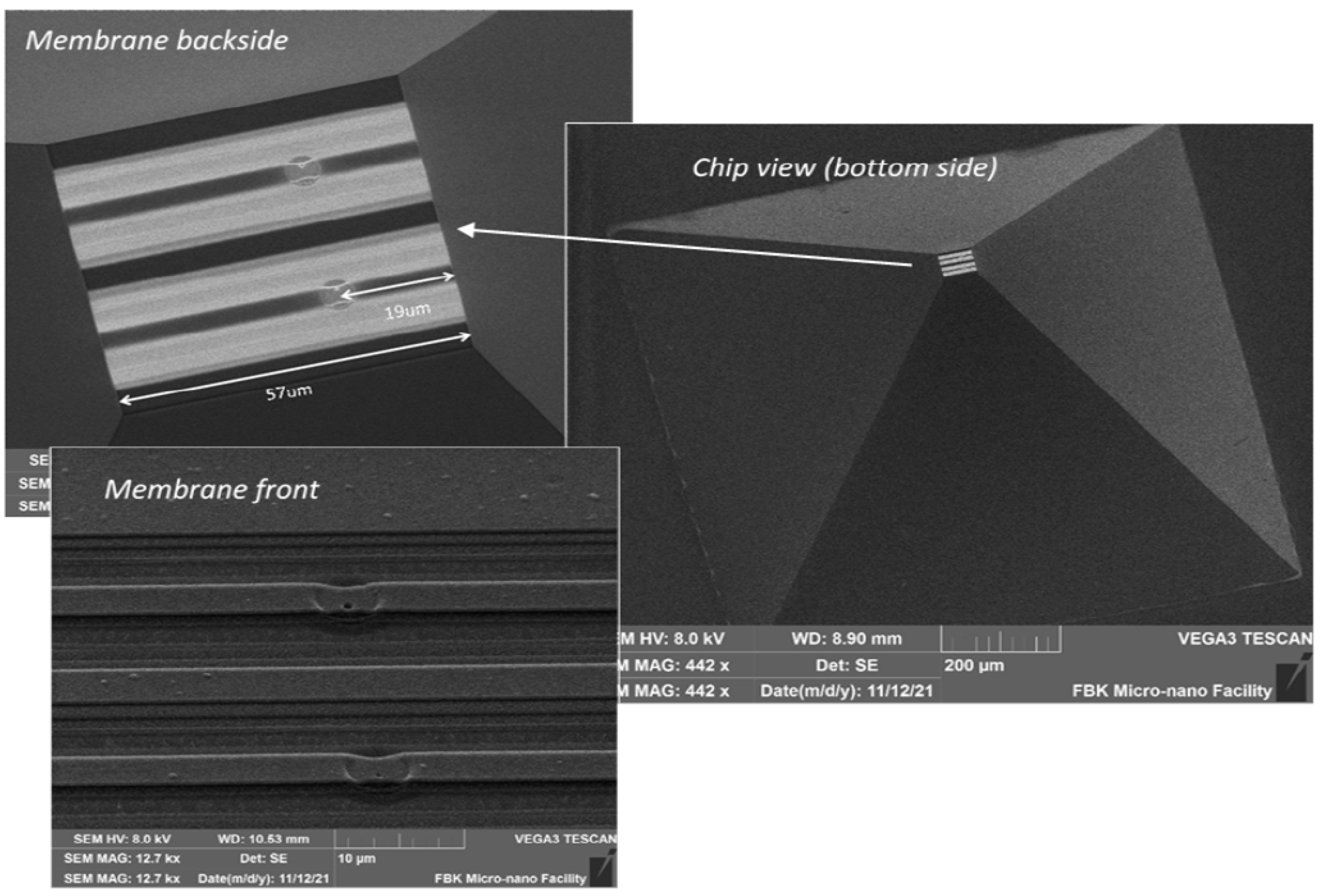MEMS Valves with Molecular Flow Regime Orifices †
Abstract
:1. Introduction
2. Materials and Methods
3. Results
Author Contributions
Funding
Institutional Review Board Statement
Informed Consent Statement
Data Availability Statement
Conflicts of Interest
References
- Kurth:, M.L.; Gramotnev, D.K. Nanofluidic delivery of molecules: Integrated plasmonic sensing with nanoholes. Microfluid. Nanofluidics 2013, 14, 743–751. [Google Scholar] [CrossRef]
- Lafferty, J.M. Foundation of Vacuum Science and Technology; John Wiley & Sons, Inc.: Hoboken, NJ, USA, 1998. [Google Scholar]
- Correale, R. A new generation of nanotechnological instruments: Application to Homeland Security domain. In Proceedings of the 8th National Conference on Cyber Warfare (CWC), Information Warfare vs Cyber Warfare: Differences and Applications, Milan, Italy, 24 November 2017. [Google Scholar]
- Correale, R. A nanotechnology approach for the realization of a novel generation of miniature and portable analytical instruments. In Proceedings of the Euro Nano Forum 2017 Conference, Valletta, Malta, 21–23 June 2017. [Google Scholar]
- Tosi, P.; Correale, R.; Lu, W.; Bassi, D. Production of the molecular Dication ArN2+ ions in the Reaction Ar2+ + N2. Phys. Rev. Lett. 1999, 2, 450. [Google Scholar] [CrossRef]
- Bagolini, A.; Correale, R.; Picciotto, A.; Di Lorenzo, M.; Scapinello, M. MEMS Membranes with Nanoscale Holes for Analytical Applications. Membranes 2021, 11, 74. [Google Scholar] [CrossRef] [PubMed]


Disclaimer/Publisher’s Note: The statements, opinions and data contained in all publications are solely those of the individual author(s) and contributor(s) and not of MDPI and/or the editor(s). MDPI and/or the editor(s) disclaim responsibility for any injury to people or property resulting from any ideas, methods, instructions or products referred to in the content. |
© 2024 by the authors. Licensee MDPI, Basel, Switzerland. This article is an open access article distributed under the terms and conditions of the Creative Commons Attribution (CC BY) license (https://creativecommons.org/licenses/by/4.0/).
Share and Cite
Bagolini, A.; Correale, R.; Picciotto, A.; Lorenzelli, L. MEMS Valves with Molecular Flow Regime Orifices. Proceedings 2024, 97, 73. https://doi.org/10.3390/proceedings2024097073
Bagolini A, Correale R, Picciotto A, Lorenzelli L. MEMS Valves with Molecular Flow Regime Orifices. Proceedings. 2024; 97(1):73. https://doi.org/10.3390/proceedings2024097073
Chicago/Turabian StyleBagolini, Alvise, Raffaele Correale, Antonino Picciotto, and Leandro Lorenzelli. 2024. "MEMS Valves with Molecular Flow Regime Orifices" Proceedings 97, no. 1: 73. https://doi.org/10.3390/proceedings2024097073





